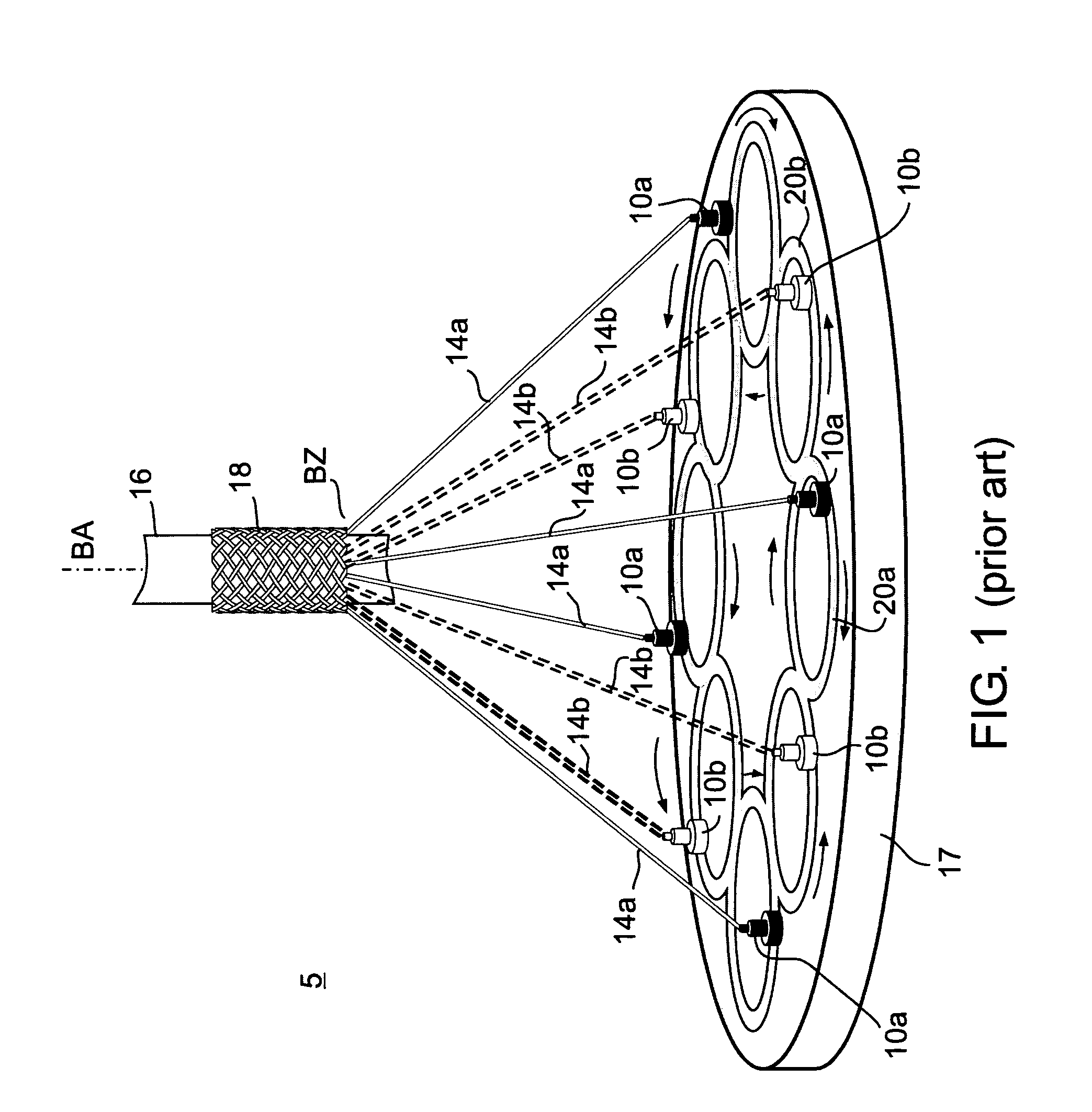Striped braided element
a technology of braided elements and braided elements, which is applied in the direction of braids, textiles and paper, etc., can solve the problems of lack of structural rigidity supplied by fine wires, increase in the cost and complexity of medical devices of wires, and inability to be desirable, so as to improve the radio-opacity characteristics, improve the radio-opacity, and improve the radio-opacity
- Summary
- Abstract
- Description
- Claims
- Application Information
AI Technical Summary
Benefits of technology
Problems solved by technology
Method used
Image
Examples
first embodiment
[0061]FIG. 4a illustrates the steps of the striped braiding method, according to the principles of the present invention. In step 1000 specific braiding operating parameters are selected, including but not limited to, type of filament to be braided, number of filament carrier units 10a, 10b number of filaments per member 14a, 14b, braiding angle or pitch, braiding speed and filament tension. The selection and implementation of operating parameters are well known to those skilled in the art. In an exemplary embodiment utilizing a 50 micron diameter wire, filament tension is set to about 1.5 Newtons with a horn gear braiding speed of approximately 75 RPM.
[0062]In step 1010 braiding machine 5 is operated to achieve a stable braiding point. After a stable braiding point has been achieved, optionally an initial non-striped braiding length is manufactured. Achieving a stable braiding point is accomplished solely for the purpose of ensuring stable operation, and is to be considered optiona...
second embodiment
[0066]FIG. 4b illustrates the steps of the generalized striped braiding method, according to the principles of the present invention. In step 1100 specific braiding operating parameters are selected, including but not limited to, type of filament to be braided, number of filament carrier units 10a, 10b, number of filaments per member 14a, 14b, braiding angle or pitch, braiding speed and filament tension. The selection and implementation of operating parameters are well known to those skilled in the art. In an exemplary embodiment utilizing a 50 micron diameter wire, filament tension is set to about 1.5 Newton with a braiding speed of approximately 75 RPM.
[0067]In step 1110 braiding machine 5 is operated to achieve a stable braiding point. After a stable braiding point has been achieved, optionally, an initial non-striped braiding length is manufactured. Achieving a stable braiding point is accomplished solely for the purpose of ensuring stable operation, and is to be considered opti...
PUM
 Login to View More
Login to View More Abstract
Description
Claims
Application Information
 Login to View More
Login to View More - R&D
- Intellectual Property
- Life Sciences
- Materials
- Tech Scout
- Unparalleled Data Quality
- Higher Quality Content
- 60% Fewer Hallucinations
Browse by: Latest US Patents, China's latest patents, Technical Efficacy Thesaurus, Application Domain, Technology Topic, Popular Technical Reports.
© 2025 PatSnap. All rights reserved.Legal|Privacy policy|Modern Slavery Act Transparency Statement|Sitemap|About US| Contact US: help@patsnap.com



